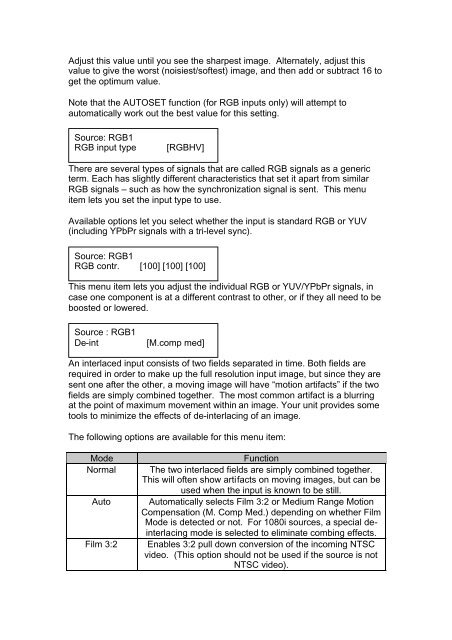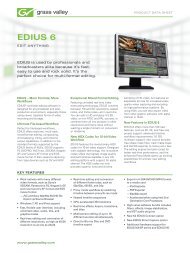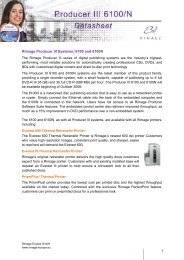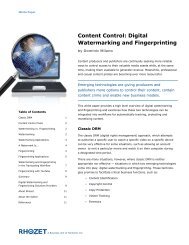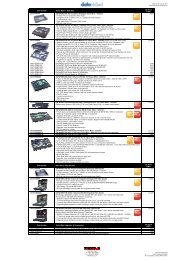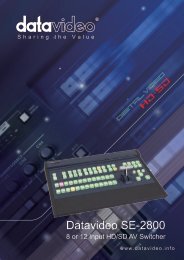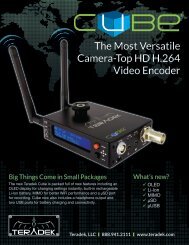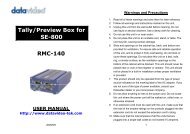Manual - Holdan.eu
Manual - Holdan.eu
Manual - Holdan.eu
You also want an ePaper? Increase the reach of your titles
YUMPU automatically turns print PDFs into web optimized ePapers that Google loves.
Adjust this value until you see the sharpest image. Alternately, adjust this<br />
value to give the worst (noisiest/softest) image, and then add or subtract 16 to<br />
get the optimum value.<br />
Note that the AUTOSET function (for RGB inputs only) will attempt to<br />
automatically work out the best value for this setting.<br />
Source: RGB1<br />
RGB input type<br />
[RGBHV]<br />
There are several types of signals that are called RGB signals as a generic<br />
term. Each has slightly different characteristics that set it apart from similar<br />
RGB signals – such as how the synchronization signal is sent. This menu<br />
item lets you set the input type to use.<br />
Available options let you select whether the input is standard RGB or YUV<br />
(including YPbPr signals with a tri-level sync).<br />
Source: RGB1<br />
RGB contr. [100] [100] [100]<br />
This menu item lets you adjust the individual RGB or YUV/YPbPr signals, in<br />
case one component is at a different contrast to other, or if they all need to be<br />
boosted or lowered.<br />
Source : RGB1<br />
De-int<br />
[M.comp med]<br />
An interlaced input consists of two fields separated in time. Both fields are<br />
required in order to make up the full resolution input image, but since they are<br />
sent one after the other, a moving image will have “motion artifacts” if the two<br />
fields are simply combined together. The most common artifact is a blurring<br />
at the point of maximum movement within an image. Your unit provides some<br />
tools to minimize the effects of de-interlacing of an image.<br />
The following options are available for this menu item:<br />
Mode<br />
Normal<br />
Auto<br />
Film 3:2<br />
Function<br />
The two interlaced fields are simply combined together.<br />
This will often show artifacts on moving images, but can be<br />
used when the input is known to be still.<br />
Automatically selects Film 3:2 or Medium Range Motion<br />
Compensation (M. Comp Med.) depending on whether Film<br />
Mode is detected or not. For 1080i sources, a special deinterlacing<br />
mode is selected to eliminate combing effects.<br />
Enables 3:2 pull down conversion of the incoming NTSC<br />
video. (This option should not be used if the source is not<br />
NTSC video).


